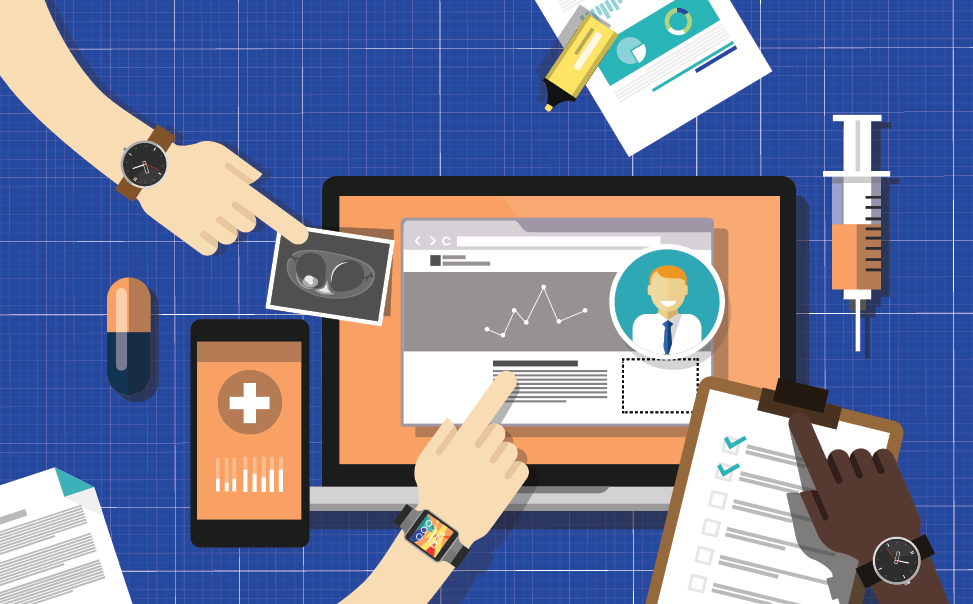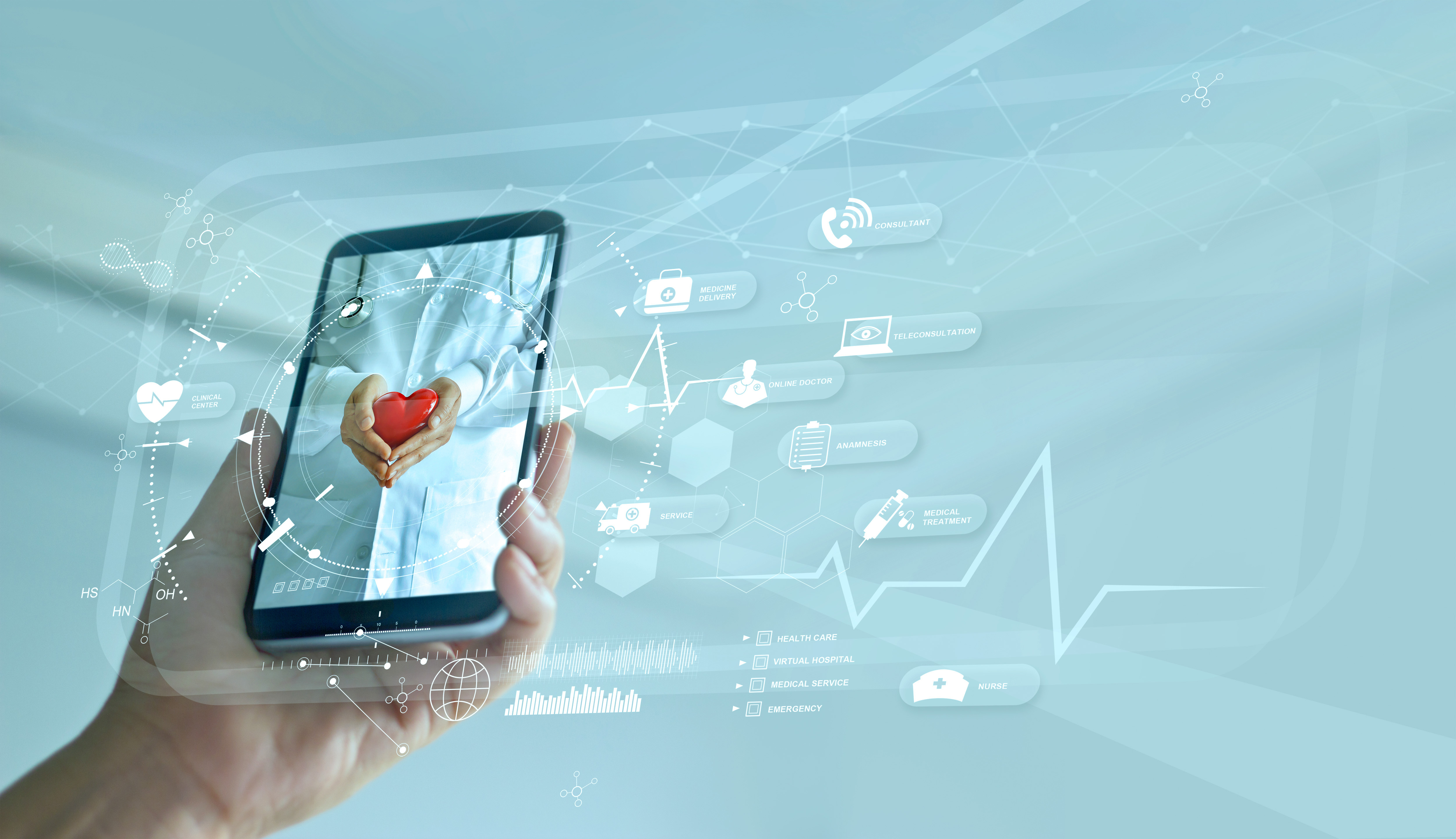Using Data Analytics to Deliver More Personalized, Predictive and Proactive Healthcare
Sharing is caring. In community settings around the world, when friends and neighbors pool insight and resources, they generate the capacity to achieve more. Information is a great unifying power, but like all forces, it must be wielded responsibly.
The term interoperability refers to the ability of two or more systems to collect, use, and exchange personal health information (PHI). When a healthcare IT system is designed to be interoperable, it is able to exchange information with other compatible systems.
HIMSS defines interoperability as “the ability of different information systems, devices and applications (systems) to access, exchange, integrate and cooperatively use data in a coordinated manner, within and across organizational, regional and national boundaries, to provide timely and seamless portability of information and optimize the health of individuals and populations globally.”
The four levels of health data interoperability are:
- Foundational
- Structural
- Semantic
- Organizational
Foundational Interoperability
Foundational interoperability is the ability of one IT system to send data to another. The receiving system does not need to be able to interpret the data, only acknowledge that it has received a data payload.
Structural interoperability
Structural interoperability is the ability of an IT system to send data to another and for the receiving system to be able to interpret it.
Semantic Interoperability
Semantic interoperability is the ability of health IT systems to exchange and interpret information and actively use the information exchanged.
Organizational Interoperability
According to HIMSS, organizational interoperability includes “governance, policy, social, legal, and organizational considerations to facilitate the secure, seamless and timely communication and use of data both within and between organizations, entities, and individuals.”
Currently, the vast majority of health IT systems in operation in the United States could be described as foundational or structural. The next giant leap forward will be driven by the shift towards semantic and holistic organizational interoperability.
 Interoperability Empowers Data-Driven Decision Making
Interoperability Empowers Data-Driven Decision Making
Data silos serve their purpose by controlling who and what entities have access to what streams of information but we are increasingly reaching a tipping point where unlocking the enterprise value of health data relies on the ability of systems to share. Whether we focus on the mezzo-level of individual healthcare networks or the macro-level of collected regional public health data, it's clear there are major opportunities available with adopting data governance strategies that promote the ability to share vital information.
At every level of clinical healthcare practice, from individual care visits with physicians to medical research conducted in controlled settings, there is potential to share data more effectively while still respecting HIPPA and other salient elements of regulatory compliance. Data silos limit innovation by stymying the ability for data-driven decision-making to fully permeate healthcare settings.
Data is a very unique type of resource because unlike oil, which simply fuels the purchasing power of an individual shareholder, it will never deplete, but instead will only gain value as it is shared and reused. Therein lies the true power of information: it influences the way we see our world, and the decisions we make, and its value is directly proportional to how widely it is distributed.
By supporting greater exchange of health data, the entire healthcare ecosystem will be stronger and more resilient. Interoperability fuels data-driven decision making which ultimately supports better outcomes for both patients and providers by reducing the cost of treatment and improving the efficiency of care.
The Benefits of Data Exchange Across Community Healthcare Systems
The use of health data analytics drives more personalized treatment options, more efficient medical diagnoses, the swifter application of preventative measures, and more informed decision making leading to better outcomes.
Data is also instrumental in unlocking enterprise business value by helping providers reduce costs by delivering more refined and streamlined services. Finally, from a societal level, data exchange is the key to supporting more innovative research and enacting policies to support more robust community and public health initiatives.
The benefits of health data interoperability represent significant advantages for every stakeholder connected to the healthcare ecosystem:
- Patient Consumers: Data exchange empowers patients to take greater responsibility for the trajectory of their care while also creating a more comprehensive and holistic record of their health that allows physicians, specialists, and admin teams to deliver the best possible care, without the need to constantly explain their condition and repeat their story.
- Healthcare Networks: Developing a deeper understanding of organizational data invigorates healthcare systems to more efficiently manage budgets, allocate resources, and develop more sustainable and resilient processes to improve quality of care and business performance.
- Medical Research: Reducing barriers to sharing medical research supports health equity by allowing high-quality insights to be developed around the world at a much lower overall developmental cost.
Creating a more innovative and sustainable global healthcare system depends on the ability to empower action through data exchange along the various stakeholder ecosystems connected to care at the community level. Access to information provides individual physicians, healthcare networks, researchers, and policymakers with the tools they need to make the best and most informed decisions.
Working Towards Developing More Robust Data Governance Strategies in Healthcare
Clearly, not all patient health information should be used, accessed, and shared by all stakeholders connected to a provider network. It is essential that organizations develop comprehensive data governance frameworks for establishing who should or should not have access to data sets.
Not all data needs to be open and accessible, however, each collection of data needs to be assessed and categorized to ensure it is shared appropriately. Meanwhile, organizations need to be proactive about informing patients about what they should expect when they opt-in to sharing their data. They should be informed if their personal health information will be anonymized, pseudo-anonymized, or contained in an aggregate.
Healthcare organizations should work towards delivering more swift and seamless flows of data to support the development of more advanced clinical research opportunities, address salient community health problems, and deliver better patient-centric care models.
Data is transforming healthcare and our next giant leap forward as an industry depends on our collective ability to share information in safe and responsible ways. It's time to break out of restrictive data silos and more fully embrace the opportunities of health data interoperability.
Learn More
Download the Gartner Report to learn what sets eVisit's end-to-end, fully integrated, enterprise care delivery platform apart from the competition.




